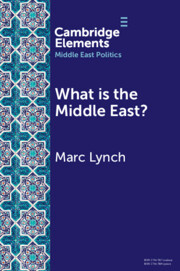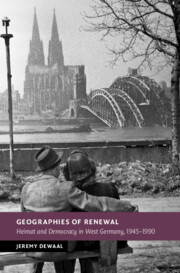Refine search
Actions for selected content:
169 results
4 - The Association of Southeast Asian Nations (ASEAN) as an International Regime
- from Part II - Prosperity and Specific Regional Trade Arrangements as International Regimes
-
- Book:
- Regional Trade Agreements, Prosperity and the Global South
- Published online:
- 23 December 2025
- Print publication:
- 29 January 2026, pp 87-114
-
- Chapter
- Export citation
5 - The African Continental Free Trade Area Agreement (AfCFTA) as a Legal Regime
- from Part II - Prosperity and Specific Regional Trade Arrangements as International Regimes
-
- Book:
- Regional Trade Agreements, Prosperity and the Global South
- Published online:
- 23 December 2025
- Print publication:
- 29 January 2026, pp 115-139
-
- Chapter
- Export citation
6 - The Southern Common Market (MERCOSUR) as an International Regime
- from Part II - Prosperity and Specific Regional Trade Arrangements as International Regimes
-
- Book:
- Regional Trade Agreements, Prosperity and the Global South
- Published online:
- 23 December 2025
- Print publication:
- 29 January 2026, pp 140-168
-
- Chapter
- Export citation
2 - Self-Determination through Regional Authority
-
- Book:
- New Regional Authorities
- Published online:
- 17 December 2025
- Print publication:
- 08 January 2026, pp 33-61
-
- Chapter
- Export citation
7 - Regional Authority and Self-Determination in International Politics
-
- Book:
- New Regional Authorities
- Published online:
- 17 December 2025
- Print publication:
- 08 January 2026, pp 170-184
-
- Chapter
- Export citation
4 - Latin America and the Emergence of Regional Authority over Human Rights
-
- Book:
- New Regional Authorities
- Published online:
- 17 December 2025
- Print publication:
- 08 January 2026, pp 88-117
-
- Chapter
- Export citation

Inter-Asian Law
-
- Published online:
- 16 December 2025
- Print publication:
- 22 January 2026
-
- Book
-
- You have access
- Open access
- Export citation
A Status Quo Power in a Changing Region: Iran’s Regionalism in the South Caucasus
-
- Journal:
- Nationalities Papers , FirstView
- Published online by Cambridge University Press:
- 01 December 2025, pp. 1-14
-
- Article
-
- You have access
- Open access
- HTML
- Export citation
From Figures to Flows: Planning Labor Emigration at the Emergence of a Modern Algerian Statistical State (1950s–1970s)
-
- Journal:
- International Labor and Working-Class History , First View
- Published online by Cambridge University Press:
- 22 October 2025, pp. 1-20
-
- Article
-
- You have access
- Open access
- HTML
- Export citation
3 - Postwar Minority Politics
-
- Book:
- Minority Identities in Nigeria
- Published online:
- 26 September 2025
- Print publication:
- 16 October 2025, pp 96-134
-
- Chapter
- Export citation
Chapter 4 - Nineteenth-Century American Realism
- from Part I - The Realist Novel
-
-
- Book:
- Realism and the Novel
- Published online:
- 05 June 2025
- Print publication:
- 19 June 2025, pp 56-70
-
- Chapter
- Export citation
From Geopolitics To Post-Structuralism: Ontological Typology Of Region Formation In International Relations
-
- Journal:
- Asia-Pacific Journal / Volume 22 / Issue 6 / June 2024
- Published online by Cambridge University Press:
- 14 March 2025, e6
-
- Article
-
- You have access
- Open access
- Export citation
Chapter 15 - Beyond the City and the Country: Rural Scarcity and Indigenous Survivance
- from Part II - Issues
-
-
- Book:
- The Cambridge Companion to Nineteenth-Century American Literature and Politics
- Published online:
- 06 March 2025
- Print publication:
- 13 March 2025, pp 253-268
-
- Chapter
- Export citation
The Ambivalent Relationship between South America and the Liberal International Order: Regional Counter-institutionalization in the Fields of Migration and Election Monitoring
-
- Journal:
- Latin American Politics and Society / Volume 67 / Issue 3 / August 2025
- Published online by Cambridge University Press:
- 05 March 2025, pp. 45-68
-
- Article
-
- You have access
- Open access
- HTML
- Export citation
(Re)imagining ‘Tears of Mokp’o’: From a Korean resistance anthem to a baseball fight song
-
- Journal:
- Modern Asian Studies / Volume 59 / Issue 2 / March 2025
- Published online by Cambridge University Press:
- 23 June 2025, pp. 560-580
- Print publication:
- March 2025
-
- Article
-
- You have access
- Open access
- HTML
- Export citation

What is the Middle East?
- The Theory and Practice of Regions
-
- Published online:
- 03 February 2025
- Print publication:
- 20 February 2025
-
- Element
- Export citation
3 - Region and Faith
-
- Book:
- The German Empire, 1871–1918
- Published online:
- 06 December 2024
- Print publication:
- 02 January 2025, pp 91-120
-
- Chapter
- Export citation
Introduction
-
- Book:
- Geographies of Renewal
- Published online:
- 19 December 2024
- Print publication:
- 02 January 2025, pp 1-30
-
- Chapter
- Export citation

Geographies of Renewal
- Heimat and Democracy in West Germany, 1945–1990
-
- Published online:
- 19 December 2024
- Print publication:
- 02 January 2025
8 - East Asian Regionalism
- from Part III - East Asia since 1945
-
- Book:
- East Asian International Relations
- Published online:
- 28 November 2024
- Print publication:
- 19 December 2024, pp 220-247
-
- Chapter
- Export citation
